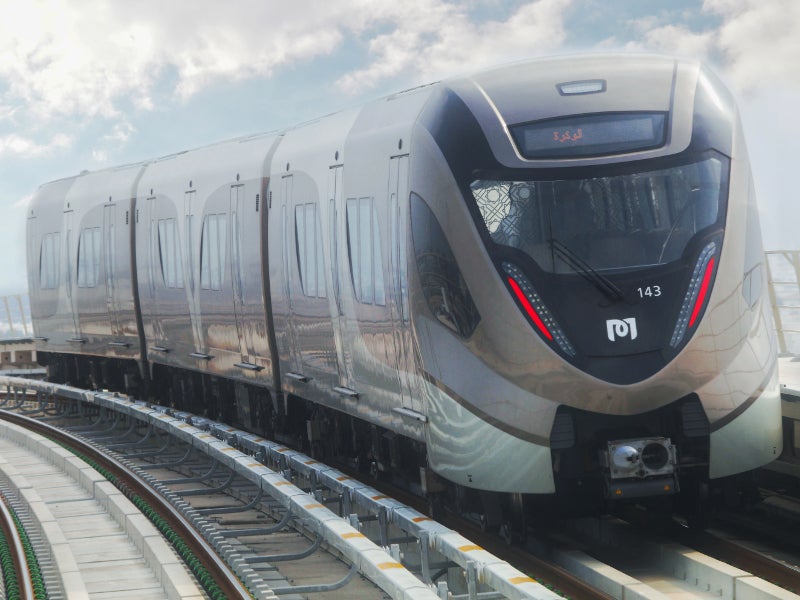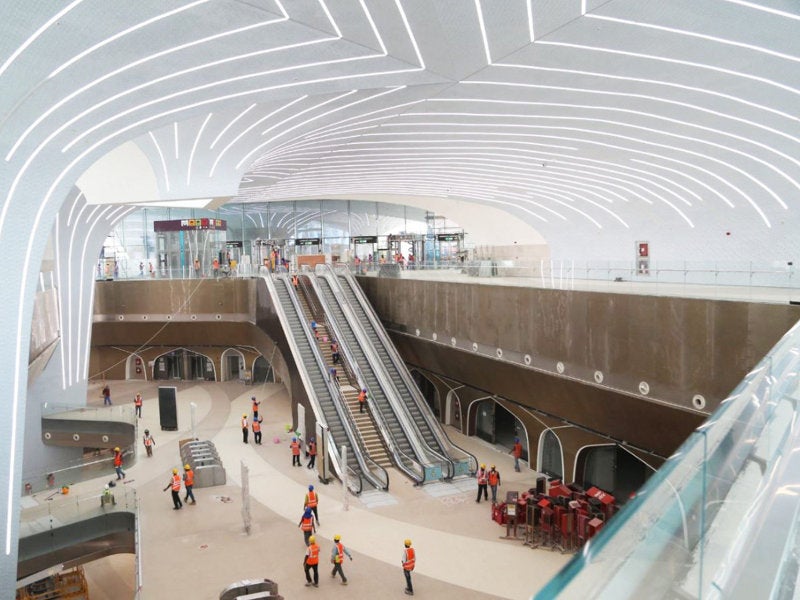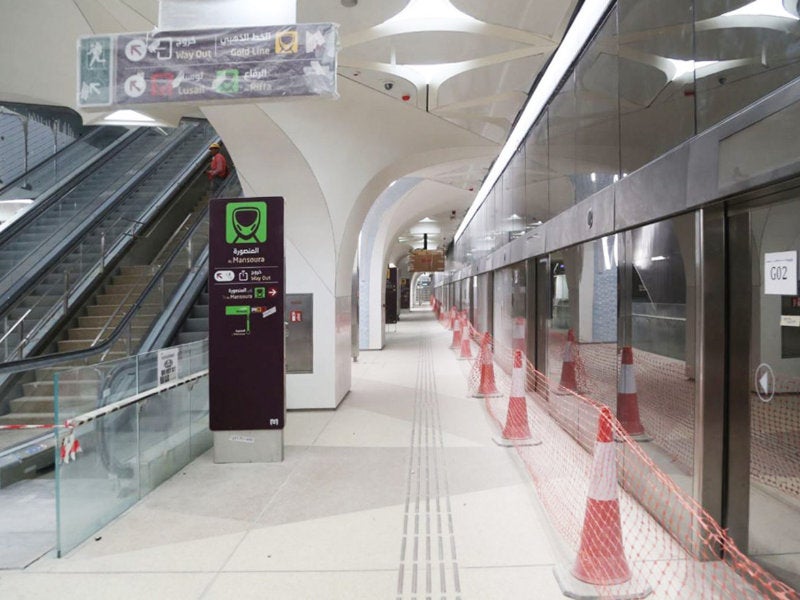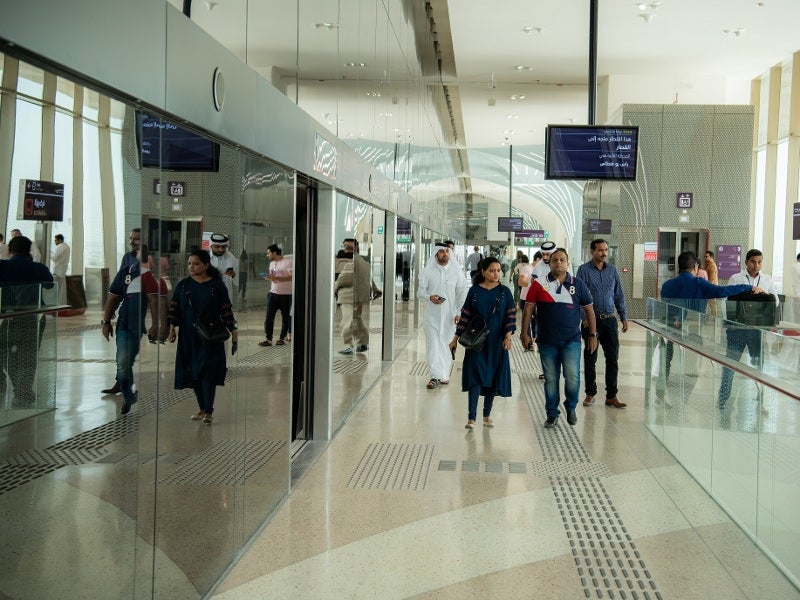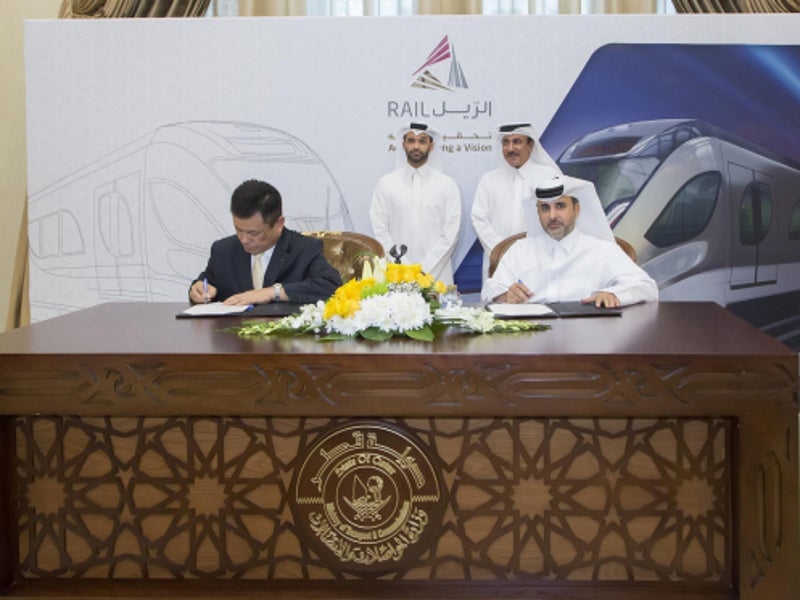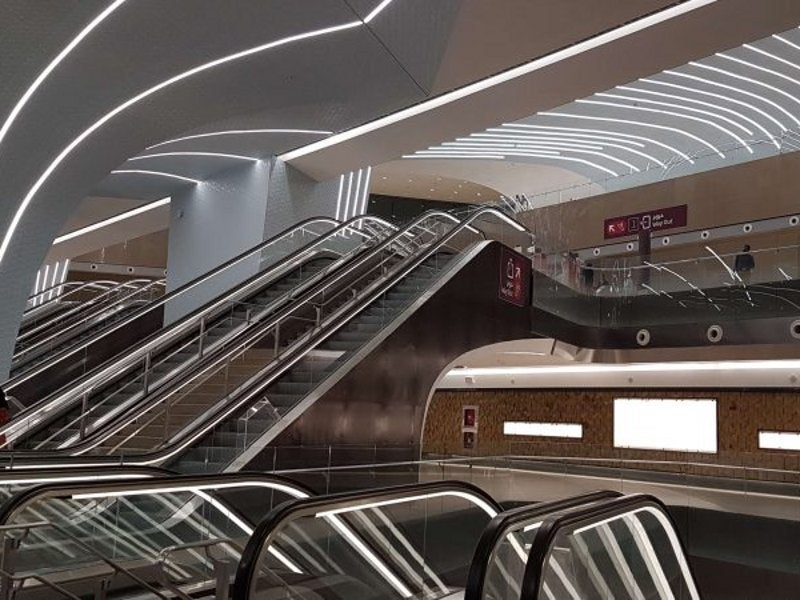Doha Metro in Qatar’s capital city is designed as one of the most advanced rail transit systems in the world. Phase one of the metro became operational in 2019 in preparation for the 2022 FIFA World Cup.
The new rapid transit network is expected to provide an efficient and reliable public transport system, while stimulating the future development in the Greater Doha area and in the state.
The rail transit system is being developed as part of the Qatar Government’s €130bn diversification and modernisation strategy, involving public and private investments. The campaign also aims to reduce Qatar’s dependency on natural gas exports.
In October 2012, the ground-breaking ceremony of the project was held and construction commenced at the Msheireb interchange station, which will serve as a hub for the metro’s operations.
As of December 2019, the metro rail project contains a 76km network with three lines and 37 stations.
Doha Metro development
The project is part of a larger railway network, which comprises five modern and flexible railway systems integrated across the Persian Gulf. The larger network includes the development of passenger and freight rail transport systems, along with fast rail links to the international airport, based on the Gulf Cooperation Council (GCC) feasibility study.
It involves the development of a metro railway system in Qatar, in addition to long-distance and freight lines connecting the emirate with the rest of the Gulf Cooperation Council (GCC).
The GCC network aims to connect the six member states, Oman, UAE, Qatar, Saudi Arabia, Kuwait and Bahrain, with a 2,177km rail network. However, uncertainty surrounds the future of the Gulf Railway due to ongoing tensions between Qatar and other countries involved.
In August 2008, national development agency Qatari Diar Real Estate Investment appointed the German national railway company Deutsche Bahn (DB) to produce plans for a railway network in the country.
DB International (DBI), the international wing of Deutsche Bahn, and Qatari Diar prepared conceptual designs for the consolidated railway network development in Qatar.
Qatari Diar and DB signed an agreement in November 2009 to form a joint venture (JV), Qatar Railways Development Company (QRDC), for implementing, developing and managing the conceptual design of the railway plan. Qatari Diar held 51% and DBI owned 49% shares in the joint venture (JV) company.
In 2011, Qatar Railways Company (Qatar Rail) purchased the shares held by DBI in the JV and became the sole owner of QRDC.
The project is now being executed directly by Qatar Rail instead of QRDC, with support from DB International. The metro network is being operated and maintained by RKH Qitarat, a JV of Hamad Group, Keolis and RATP Dev.
Design details
With an estimated cost of $36bn, the metro rail project is being built in two phases and is expected to become one of the most modern railway networks in the world.
Once fully operational, the metro is expected to feature a network of 300km with four lines named Red, Green, Gold and Blue.
Phase one of the project involved the construction of the Red, Green and Gold lines and 37 stations. Phase two will add the Blue line to the network and will also involve the expansion of the existing lines. Approximately 60 additional stations are expected to be added to the city metro network by 2026.
Lines and routes of Doha Metro
The Red Line, also called the Coast Line, runs from Al Wakra in the south to Lusail in the north via the Hamad International Airport. The 40km-long line covers 18 stations, including the Legtaifiya Station that will allow passengers to transfer to Lusail Tram services.
The Green Line, or Education Line, stretches 22km and runs from Al Riffa to Al Mansoura. The line covers 11 stations, including Msheireb, Hamad Hospital, Qatar National Library and Education City.
The Historic Line, or Gold Line, connects Ras Bu Aboud and Al Aziziya. There are 11 stations along the 14km route.
The Blue Line, or City Line, will be a 17.5km-long semi-circular line linking the West Bay and Airport City North areas along the main C-Ring Road and connecting four stations.
Rolling stock
A consortium of Mitsubishi Heavy Industries (MHI), Mitsubishi Corporation, Hitachi, Kinki Sharyo and Thales submitted a bid for the turnkey construction of a fully automated driverless metro system in March 2014 and received a letter of conditional acceptance (LCA) in February 2015.
The work package included the delivery of 75 sets of three-car trains, tracks, platform screen doors, a railway yard, a signalling system, power distribution, tunnel ventilation and telecommunications. The first four train sets of the Doha Metro were delivered in August 2017.
As the leader of the consortium, MHI is responsible for overall project management, system integration and tunnel ventilation work. It also supplied the power distribution system, platform screen doors and tracks.
The rail cars were supplied by Mitsubishi Corporation in collaboration with Kinki Sharyo. Advanced communications-based train control (CBTC) signalling, telecommunications and security, integrated operational control centre, and automatic fare collection systems will be supplied by Thales.
Hitachi handled part of the project management tasks and maintenance, including the delivery of special maintenance vehicles for the inspection of railway tracks and electric train lines.
In October 2018, Kinki Sharyo received an order to deliver an additional 35 trains, bringing the total fleet to 110. The new fleet is intended to cater to the increased passenger numbers during the FIFA World Cup 2022.
Doha Metro rail infrastructure details
The four lines of the metro will facilitate connectivity between major locations of the city such as Education City and West Bay, Lusail urban development area, Doha Airport, the business and conference centre, and the 2022 FIFA World Cup stadiums.
The majority of the metro infrastructure is underground and involved the construction of tunnels. Tunnel boring machines (TBMs) were used to dig the underground sections. The Red and Green lines also include elevated and at-grade sections.
Contractors involved in the project
Project management and consulting engineering contract for the Red line was awarded to Jacobs Engineering in 2013, while a similar contract for the Gold Line and the main stations was awarded to a team comprising of Louis Berger and Egis Rail. Hill International was contracted to manage the Green Line. The total value of these three contracts is estimated to be $313.16m.
A QR55m ($15.1m) safety assessment contract was awarded to Lloyd’s Register in the same year.
A consortium led by Italian construction giant Impregilo that included South Korea’s S K Engineering & Construction and Qatar’s Galfar Engineering & Contracting received the design contract for the Red Line North in April 2013. The consortium was contracted to design and construct 13km of twin-bore underground tunnels and seven underground stations, beginning with Msheireb station.
Qatar Rail awarded the $1.82bn Red Line South design-build contract to the consortium led by QDVC, a joint venture between Qatari Diar and France’s Vinci Construction Grands Projects, in June 2013. The consortium, which includes South Korea’s GS Engineering and Construction and Qatar’s Al-Darwish Engineering, was also contracted to design and build a 12.8km dual-tube underground line between Msheireb Station and the New Doha International Airport.
A consortium of Austrian contracting firm Porr, Saudi Binladin and HBK Contracting Company was awarded a $2.5bn contract in June 2013 for the design and construction of the Green Line between Msheireb and Al Rayyan Stadium.
A consortium of Samsung C&T, Obrascon Huarte Lain (OHL) and Qatar Building Company (QBC) won a $1.4bn contract in the same month to build the project’s two major stations in Msheireb and Education City.
The FCC-led consortium, which includes Archirodon (Greece), Yüksel (Turkey) and Petroserv (Qatar), signed a $700m contract to build a 6.97km section of the Red Line along with three elevated stations in March 2014. A consortium led by Greek firm Ellaktor, alongside Yapi Merkezi and STFA from Turkey, India’s Larsen & Toubro and Qatari company Al Jaber Engineering, was awarded a $3.3bn contract for the design and construction of the Gold Line in April 2014.
In the same month, the SYSTRA-Parsons joint venture was awarded a €170m project management and work supervision contract for phase one.
Atkins was appointed as lead designer for the Gold Line and Red South Underground lines.
UNStudio was appointed as the principal architect for the Qatar Integrated Railway Project by Qatar Rail. It designed more than 30 stations in phase one of the project in September 2014.

